Panasonic Lumix ZS20 / TZ30
-
-
Written by Gordon Laing
Verdict
The Lumix ZS20 / TZ30 is the successor to 2011’s best-selling ZS10 / TZ20. Every year Panasonic releases an upgraded version of its super-zoom travel compact, and every year it rockets to the top of the sales charts, even under increasingly tough competition. Panasonic understands Canon and Sony really want a share of this lucrative market, and as such resting on its laurels is not an option
As such, the latest ZS20 / TZ30 features a number of key benefits over its predecessor, the most important being a longer zoom, a slimmer body, built-in GPS mapping, and improvements for both photo and video quality.
The new 20x zoom is undoubtedly the attention-grabber, and while Canon and Sony now both have rival models with the same total range, Panasonic has impressively managed to squeeze it all into a comfortably thinner body. But for me the most important change concerns image quality as this is where the earlier ZS10 / TZ20 fell down. Read on to find out what I discovered…
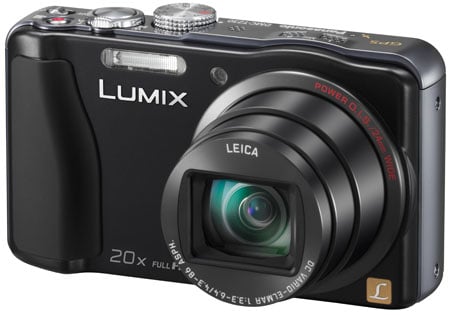 |
Last year, Panasonic equipped the ZS10 / TZ20 with a MOS sensor for the first time and reaped the benefits of faster continuous shooting and 1080 video, but on the downside suffered from increased noise across the entire sensitivity range. It was essentially a repeat performance of Panasonic’s own Lumix FZ100 super-zoom, which following a switch to MOS technology also offered a great deal but was ultimately let down by quality. Then towards the end of 2011, Panasonic launched the FZ150 which with a new MOS sensor, greatly improved image quality.
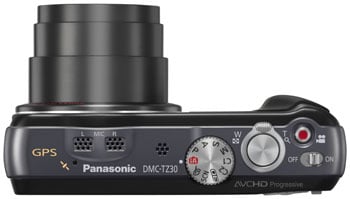 | |
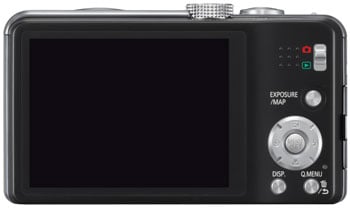 | |
I, like many, had hoped Panasonic would simply fit the FZ150’s sensor into the new ZS20 / TZ30. It would have been a great story too as everyone would have known what to expect, but perversely the company opted for a different sensor. Where the FZ150 dropped a couple of Megapixels from 14 to 12, the ZS20 / TZ30 stuck with 14.
I assume this was a decision driven by marketing, as increasing or at least maintaining Megapixels may be more important in this product category. Certainly Sony continuous to bravely (or perhaps blindly) plough ahead with no less than 18 Megapixels on its rival 2012 model, but conversely Canon hasn’t suffered by reducing the resolutions of its compacts and rebranding them as High Sensitivity, HS, models.
Either way, Panasonic has stuck with 14 Megapixels on the ZS20 / TZ30, but it has made improvements to the sensor itself and I’m relieved to say the quality is visibly better than its predecessor. Don’t get me wrong, at this degree of pixel density, you’re never going to see completely clean images even at the lowest ISOs, but the ZS20 / TZ30 does represent an improvement over the ZS10 / TZ20 in terms of still photo quality and that’s good news. You can see a full report in my ZS20 / TZ30 quality and ZS20 / TZ30 noise pages. PS – it would be remiss of me not to mention the cheaper ZS15 / TZ25, which with a ‘new’ 12 Megapixel MOS sensor may in fact be using the same chip as the FZ150 and might deliver better quality than the ZS20 / TZ30 as a consequence – I’ll report back when I’ve tested that model.
Moving onto the lens, Panasonic has increased the 16x range of the earlier ZS10 / TZ20 to 20x on the new model, and you get it all at the telephoto end. So the 24mm equivalent wide angle remains, but the ZS20 / TZ30 can now zoom to 480mm as oppose to 384mm, giving it considerably longer reach than before.
For a brief time, this allowed Panasonic to enjoy the prize of longest range in a pocket super-zoom, but shortly afterwards both Canon and Sony matched the total range with their 2012 rivals. But the ZS20 / TZ30 impressively manages to squeeze it all into a thinner body than its rivals, which remain quite chunky in comparison.
I’m pleased to report the miniaturisation has not compromised optical quality and the lens performs similarly to models with shorter ranges. As such there’s an inevitable reduction in contrast coupled with softness in the extreme corners when zoomed-in, but overall the range delivers good results.
The increased range in a small body did however present some personal challenges concerning stabilisation. I found it hard to handhold video at the longest zoom without the footage suffering from visible shake which the stabilisation was unable to compensate for. Now this is a very personal thing and may not affect you; then again it may be worse. The important point though is I can successfully handhold the DSLR-styled super-zooms like the FZ150 at similar (or longer) focal lengths due to their larger, more comfortable grips, but the smaller bodies of the travel zoom models makes them harder to hold steady. Now as the zooms extend to 20x and beyond, some of us may find it hard to handhold them steadily for video. I should also add Panasonic continues with the annoying decision to keep stabilisation always enabled for video even when the camera’s on a tripod, so there’s no real escape from panning artefacts. I suppose the solution is to keep an eye on the zoom and only go for the maximum under conditions you know will be steady.
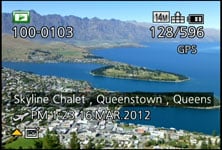 | 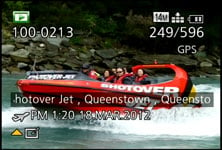 |
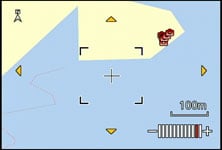 | 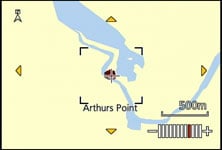 |
The next major upgrade is built-in mapping. It was an inevitable move for a camera with built-in GPS, yet Panasonic seems to be the only company to exploit a receiver for more than just the embedding of co-ordinates. So alongside the fun database of landmarks and locations introduced a couple of generations ago, the ZS20 / TZ30 can now display maps at 1:25,000 scale for the entire world. Yes, the entire world.
Now before you get too excited, there are caveats. First the maps aren’t actually built-into the camera, but split into ten regions and loaded onto your SD card via a utility and a supplied DVD. This makes sense as the total installation is 6.37GB and the utility allows you to only install the regions you want. But of course it does tie them to the card in question so if you switch cards or format it, you’ll need to reload the maps from the DVD.
Secondly don’t expect the rich graphics of Google maps or even a half-decent in-car navigator. The ZS20 / TZ30 maps may go down to street-level, but they’re sticks accompanied by basic country, lake and river outlines with little else. Some roads are labelled, but not all. Some landmarks are present, but not all. It really should be seen as a fun bonus, rather than something to rely on.
But it does seem churlish to complain as while Canon and Sonly also equip their travel super-zooms with GPS receivers, they’ve done little more than just embed the data into the images. In contrast, Panasonic has had fun including a database of landmarks and now basic mapping too, in addition to the embedding of co-ordinates. It’s also been the only company to date which offers a variety of reception modes to balance acquisition times against battery life.
In terms of video, the inevitable upgrade from 1080i sees the ZS20 / TZ30 capturing 1080p video, and switching the alternative Motion JPEG mode of its predecessor for the more useful MP4 format here. Beyond the stabilisation issues mentioned earlier, I have no complaints regarding the video which looks good under bright conditions and has a decent stab at continuous AF tracking while filming. You can see a selection of clips in my ZS20 / TZ30 movie mode section.
Other highlights include two composite modes inspired by Sony: a genuine three-frame composite HDR option and a panorama mode which trumps its big rival with almost 360 degree overage, albeit at often low resolutions. You can see examples in my main review.
Continuous shooting remains essentially unchanged which means you get a variety of options from 2fps to 60fps at varying resolutions and AF capabilities. As before, my preferred choice was the 5fps mode which could shoot full resolution images with AF for decent bursts. The 10fps mode lacked AF and could only shoot for ten frames – or one second of action – in my tests.
My only real bug-bears remain the same as the earlier ZS20 / TZ30 which suggests Panasonic isn’t in any hurry to correct them. First, the touch-screen implementation may be broad and genuinely useful, but still doesn’t extend across the whole user interface. I accept the quick and main menus may be too fiddly for touch control, but there’s no excuse to present chunky buttons for text-entry and not make them touch-sensitive.
Secondly I still don’t personally like using a switch to go between record and playback. I know this is pretty much a standard for Panasonic, but I much prefer everyone else’s approach where pressing and holding the play button can power the camera into playback, while a half-press of the shutter release will take you straight from play to record.
Considering these are my major complaints though, it’s looking pretty good for the ZS20 / TZ30. So before my final wrap-up, how does it compare to rivals?
Compared to Panasonic Lumix ZS15 / TZ25
Like its predecessor, the ZS20 / TZ30 was launched alongside a cut-down version available at a lower price. Unlike previous versions though, the ZS15 / TZ25 no longer shares the same lens as its pricier sibling, but instead uses the 16x 24-384mm lens of its predecessor.
The sensor is also different, so instead of a 14 Megapixel MOS sensor, the ZS15 / TZ25 employs a 12 Megapixel MOS sensor; interestingly, this is the first time the cheaper model has employed MOS technology as the previous ZS8 / TZ18 used a 14 Megapixel CCD. It’ll be interesting to see if the lower pixel count actually gives the cheaper model an advantage in quality.
It’s not surprising to find the ZS15 / TZ25 lacking the 1080p video of the ZS20 / TZ30, but it does at least now offer 1080i Full HD using AVCHD encoding; its predecessor was limited to 720p using Motion JPEG. It also enjoys similar continuous shooting capabilities with the same 2, 5, 40 and 60fps options, and the only difference being the 10fps mode is now limited to four rather than ten frames in a burst.
The cheaper model is still lacking the GPS capability of its pricier sibling, and while it also still doesn’t sport a touch-screen display, the panel has at least been upgraded from 3in / 230k to 3in / 460k to match the resolution.
But while the ZS15 / TZ25 lacks the 20x zoom range, 1080p video, GPS positioning and touchscreen display of the pricier ZS20 / TZ30, it still features a compelling 16x range, 1080i video, 3D photo capture and a decent screen in a pocket-sized package. As such it represents a decent upgrade over its predecessor and a tempting option for those on a tighter budget. And if the lower resolution sensor ends up delivering better image quality, it could be the preferred choice overall.
See my Panasonic ZS15 / TZ25 review for more details.
Compared to Canon and Sony…
Canon and Sony recently announced pocket super-zooms with 20x optical ranges. We’ll be reviewing them soon, so will update this page with comparisons.
Panasonic Lumix ZS20 / TZ30 final verdict
Panasonic originally invented the concept of a pocket super-zoom camera, but now shares this lucrative market with all the big names. As such when it comes to the annual update of its best-seller, the company is increasingly pulling-out all the stops to make improvements and stay a step-ahead of rivals. So now the latest ZS20 / TZ30 boasts a longer 20x optical range squeezed into a slimmer body, full 1080p video, a raft of special effects and built-in GPS mapping in addition to the database of landmarks introduced a couple of generations ago.
For many though, the most important improvement for the ZS20 / TZ30 regards image quality, which was disappointing on its predecessor. Well I’m pleased to say Panasonic has visibly improved the quality of photos, although I can’t help feeling the simple adoption of the Lumix FZ150’s sensor would have been even better (and it also begs the question whether the cheaper ZS15 / TZ25 might deliver better-looking photos). But the important point is the photo quality of the ZS20 / TZ30 is better than its predecessor. You still won’t have noise-free images with this pixel density, but overall I was satisfied with the output which is more than can be said for last year’s model.
The other enhancements also work well, with the zoom delivering a comfortably longer reach without compromising quality (or size) and the mapping adding a fun extra. The slimmer body is definitely a benefit in a category known for chunkiness, and the adoption of in-camera USB charging is useful and convenient.
Downsides? As described earlier, the stabilisation may not allow handheld video at the longest zooms without some wobbles, the mapping is pretty basic compared to the graphically rich options we’ve become used to on other platforms, and the touch-screen interface still doesn’t extend to things like text-entry where it would have been really useful; and I’m still no fan of a switch for record and playback.
But that’s really about it. The Lumix ZS20 / TZ30 represents a decent upgrade over its predecessor, addressing its biggest issue and further enhancing its core capabilities in a body that’s slimmer too. As such it regains the Highly Recommended award lost last year due to image quality. Of course as the first of the year’s new models, I’ve yet to compare it against the Canon and Sony equivalents, but in the meantime the ZS20 / TZ30 sets the benchmark for pocket super-zooms.
Bad points
 Hard to handhold video at the longest zoom. Can’t disable video IS. | Scores (relative to 2012 super-zooms) | |||
Build quality: Image quality: Handling: Specification: Value:
Overall: |
18 / 20 16 / 20 17 / 20 19 / 20 17 / 20
87% | |||





